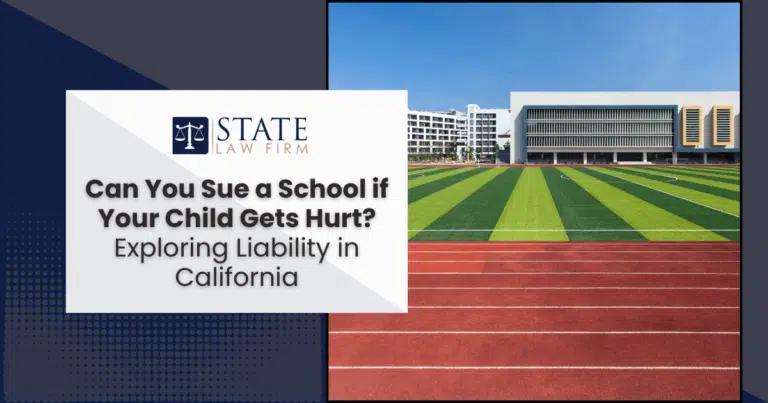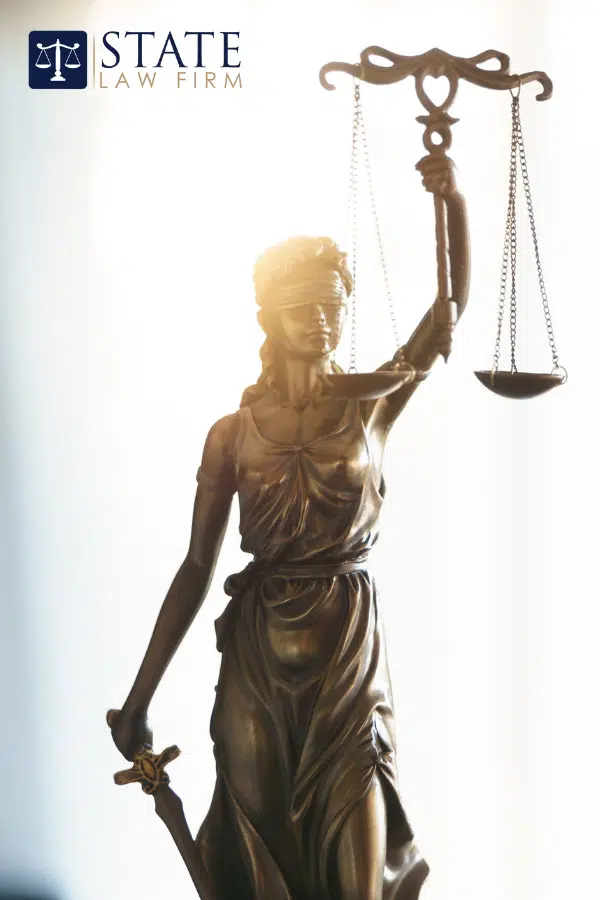As a parent, ensuring your child’s safety at school is a top priority. Yet, accidents and injuries can happen even in the most carefully monitored environments, leaving parents wondering whether legal action is an option. In California, schools have a duty of care to provide a safe environment for students, but understanding when they can be held legally responsible for injuries requires navigating a complex legal landscape.
According to the National Safety Council, there were over 7.7 million injuries related to school-aged children in 2020, many occurring on school premises or during school-related activities. (Source). With so much at stake, knowing your rights and understanding school liability is crucial for parents seeking justice and compensation.
At State Law Firm, we specialize in premises liability cases, helping families in Sherman Oaks and across California understand their legal options when it comes to injuries on school property. Our dedicated team of attorneys is committed to fighting for your child’s rights, providing personalized legal representation that helps you navigate these challenging cases with confidence.
In this article, we’ll explore the intricacies of school liability in California, the types of injuries that may lead to legal action, and the process of filing a claim against a school. Whether you’re seeking answers or considering legal action, this guide aims to be a valuable resource for navigating these situations. Let’s get started.
Understanding School Liability: What Parents Need to Know
Schools in California have a legal obligation to provide a safe environment for students. This duty of care requires school administrators, teachers, and staff to take reasonable steps to prevent foreseeable injuries on school grounds or during school-sponsored activities. When this duty is breached—whether through negligence, unsafe conditions, or inadequate supervision—the school may be held liable for resulting injuries.
Key Aspects of School Liability Include:
- Negligence Claims: A school may be liable if it failed to act as a reasonable institution would under similar circumstances. For example, neglecting to repair hazardous playground equipment can lead to injuries.
- Premises Liability: Schools must maintain safe premises, ensuring walkways, classrooms, and sports facilities are free from dangerous conditions.
- Educational Institution Responsibility: This includes proper hiring, training, and oversight of staff, as well as providing adequate supervision during activities.
Schools should be places of learning, not injury, but accidents do occur. If your child has been hurt on school property, it’s essential to understand your legal rights. Explore more about how accidents in school zones are managed here.
Types of Injuries That May Lead to Legal Action Against Schools
Injuries in schools vary widely, and not all incidents warrant legal action. However, certain types of injuries often result in lawsuits:
- Playground Injuries: Faulty equipment, lack of supervision, or unsafe playground surfaces can lead to serious harm.
- Sports-Related Injuries: While sports carry inherent risks, improper coaching, inadequate safety gear, or unsafe conditions may establish grounds for a claim.
- Bullying Cases: Schools have a responsibility to address bullying and prevent harm resulting from it. Failure to do so may lead to liability.
- Unsafe Conditions: Broken stairs, wet floors, or poorly maintained facilities can cause preventable accidents.
Pro Tip: Document everything. Photographs of the scene, medical reports, and eyewitness statements can strengthen your case.
The Legal Framework Governing Suits Against Schools in California
Filing a lawsuit against a school is not straightforward, as schools are often protected by sovereign immunity. However, exceptions under California law allow lawsuits in specific circumstances:
- California Education Code: Schools must adhere to regulations that ensure student safety.
- Sovereign Immunity: Public schools are protected by this legal doctrine, but claims can proceed if negligence is proven.
- Tort Claims Act: This law governs how claims against public entities, including schools, are filed and processed.
Understanding these legal nuances is vital to pursuing a claim. Consulting with a knowledgeable attorney can make a significant difference in navigating this complex process.
The Process of Filing a Lawsuit Against a School: Step-by-Step Guide
Filing a lawsuit against a school involves several steps, each requiring careful preparation:
- Determine the Viability of Your Case: Assess whether the school’s actions or inactions constitute negligence.
- File a Government Tort Claim: For public schools, this is a prerequisite before a lawsuit. The claim must be filed within six months of the injury.
- Gather Evidence:
- Photographs and videos of the injury site
- Medical records and bills
- Witness statements
- Consult an Attorney: An experienced attorney can help you meet legal deadlines, navigate procedural hurdles, and build a compelling case.
- Initiate Legal Proceedings: If the claim is denied or unresolved, a formal lawsuit can be filed.
Common Defenses Schools Use to Combat Injury Claims
Schools often have robust legal defenses to counter injury claims. Some of the most common include:
- Contributory Negligence Argument: Claiming the injured party (or their guardian) shares responsibility for the incident.
- Assumption of Risk Doctrine: Particularly in sports-related injuries, schools may argue that participation implies acceptance of inherent risks.
- Lack of Foreseeability Defense: Schools may assert they could not have reasonably foreseen the event leading to the injury.
Pro Tip: Work with an attorney who can anticipate these defenses and build a strategy to counter them effectively.
The Role of Insurance in School Injury Claims and Settlements
School insurance policies play a significant role in resolving injury claims. These policies often cover:
- Liability Coverage: This includes injuries resulting from negligence or unsafe premises.
- Settlement Negotiations: Insurance adjusters may attempt to minimize payouts, but having legal representation ensures fair compensation.
- Medical Costs: Many policies cover immediate medical expenses, reducing financial stress for families.
Understanding the scope of the school’s insurance policy is critical to securing a favorable settlement. A skilled attorney can negotiate with insurers on your behalf to ensure all damages are accounted for.
Conclusion
When your child is injured at school, you deserve answers, accountability, and support. While navigating the legal process can feel overwhelming, you don’t have to face it alone. At State Law Firm, we pride ourselves on delivering personalized, compassionate legal representation tailored to your needs. Let us help you hold schools accountable and secure the justice your child deserves.
If you’re ready to take the first step, reach out today for a consultation.


